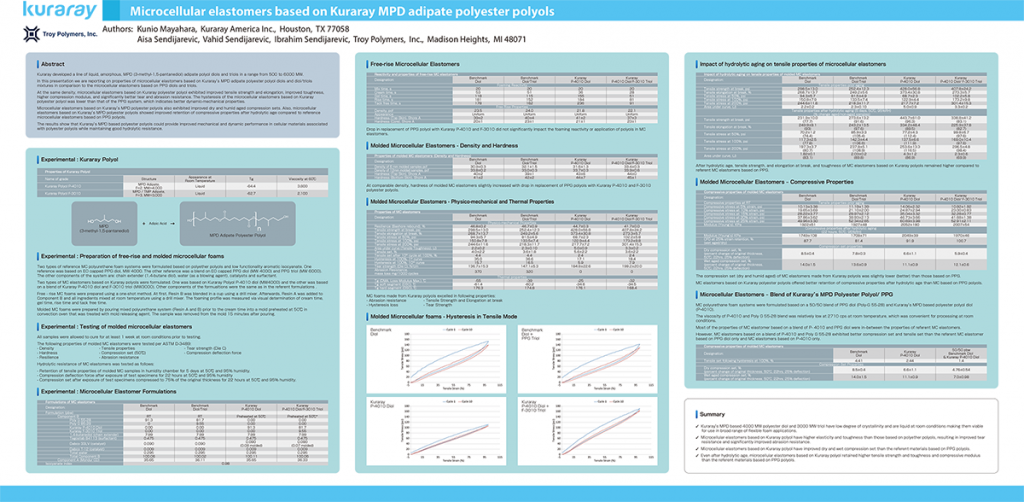Our Advanced Chemicals Team will be in Orlando, FL October 7-9 at the 2019 Polyurethanes Technical Conference. We’ll be showcasing unique Diols and Polyols that improve performance and open the door to new innovative applications. These improvements include high transparency, durability, heat and UV resistance, improved hydrolysis resistance, and a softer, more luxurious feel. Polyurethane and polyester resins are key applications.

2018 Best Poster: Microcellular Elastomers Based on Kuraray MPD Adipate Polyester Polyols
In 2018 the Kuraray Team received the Best Poster Award at the Conference for their presentation, “Microcellular Elastomers Based on Kuraray MPD Adipate Polyester Polyols.”
MPD (3-methyl-1.5-pentanediol) is an isomer of 1.6-hexanediol and hexylene glycol, but has even more unique properties. Thanks to the methyl branch in the middle of structure, MPD and its derivatives remain amorphous even at low temperatures. As a resin, MPD gives a high degree of softness, durability, solvent compatibility and transparency. Polyurethane and polyester resins are key applications for this diol. MPD opens the door to new innovative applications for your polymers.
Kuraray offers a variety of MPD-based polyols with various molecular weights. The portfolio includes polyester polyols (P-series) and polycarbonate polyols (C-series). Kuraray polyols offer low viscosity due to the branched structure of the MPD and are well-suited in many applications as constituents of polyurethane resins. From man-made leathers, spandex, and auto interiors to inks, coatings, and adhesives, the methyl branch of Kuraray polyols provides significant advantages. Luxurious feel, softness, good solubility to solvents, better miscibility with other polymers, high transparency, good adhesiveness, and improved hydrolysis resistance.

